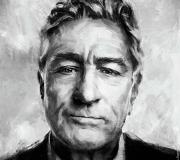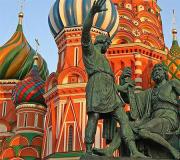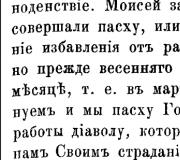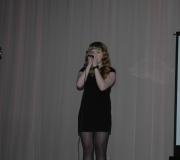What is the height of the Spasskaya tower? Spasskaya
350 years ago, on April 26, 1658, the Frolovskaya tower of the Moscow Kremlin, by decree of Tsar Alexei Mikhailovich, became known as Spasskaya.
Spasskaya (formerly Frolovskaya) Tower is the main tower of the Moscow Kremlin. It was erected to strengthen the northeastern part of the Kremlin on the site where the main gate of the Kremlin was located in ancient times. The tower was built in 1491 by the Italian architect Pietro Antonio Solari. Initially, the tower was called Frolovskaya, since nearby there was a church in the name of the Holy Martyrs Frol and Laurus, who were revered in Rus' as the patrons of livestock. The church has not survived.
On April 16, 1658, Tsar Alexei Mikhailovich issued a decree renaming the towers of the Moscow Kremlin. Thus, Timofeevskaya, named after the courtyard of boyar Timofey Vasilyevich Vorontsov Velyaminov, became Konstantino Eleninsko, Sviblova Vodovzvodnaya, after the machine installed inside it, which raised water. The Frolovskaya tower was renamed Spasskaya in honor of the icon of the Savior of Smolensk, placed above the passage gate from the Red Square, and in honor of the icon of the Savior Not Made by Hands, located above the gate from the Kremlin.
Old names were strictly prohibited. And only the Borovitskaya tower, which was ordered to be called Predtechenskaya, despite any prohibitions, has survived to this day as Borovitskaya, that is, built on the site of a small forest or pine grove “Borovitsa”.
The gates of the Spasskaya Tower were the main main entrance to the Kremlin, were considered holy and were especially revered by the people: men had to pass through them with their heads uncovered, and it was forbidden to ride through the Spasskaya Gates on horseback. From here regiments left for battle, here they met kings and foreign ambassadors.
When built, the tower had a tetrahedral shape and was approximately half as low as it is now.
Since 1625, the Kremlin towers began to be built on. The first to be built was the main Kremlin tower, Frolovskaya. Russian architect Bazhen Ogurtsov and English master Christopher Galovey erected a multi-tiered top over the tower, ending with a stone tent.
In the mid-17th century, the coat of arms of the Russian Empire, a double-headed eagle, was erected on top of the tent. Later, similar coats of arms were installed on the highest towers of Nikolskaya, Troitskaya and Borovitskaya.
Nowadays the Spasskaya Tower has 10 floors. Its height to the ruby star is 67.3 meters, with the star 71 meters. The star on the Spasskaya Tower was first installed in 1935; in 1937 it was replaced by a new one with a wingspan of 3.75 m.
The first clock on the Spasskaya Tower was installed in 1491. In 1625, they were replaced by a new clock made by the Englishman Christopher Galovey, Russian blacksmiths Zhdan with his son and grandson, foundry worker Kirill Samoilov. In 1707 they were replaced by Dutch chimes with music. In 1763 the clock was replaced again. The now well-known Kremlin chimes were installed in 1851-1852 by the Butenop brothers.
Spasskaya Tower(until 1658 - Frolovskaya) - the most famous of the 20 towers Moscow Kremlin, goes to Red Square close Execution Place And Intercession Cathedral. The tower's tent is decorated with a chiming clock, which has made the Spasskaya Tower a collective symbol of the Kremlin and Moscow as a whole.
The tower was built in 1491 according to the design of a Milanese architect Pietro Antonio Solari, subsequently built on by an English architect Christopher Galovey together with the Russian master Bazhen Ogurtsov. Initially built from red brick, in different years depending on aesthetic preferences.
The shape of the base of the tower is a quadrangle, which is crowned with a multi-tiered hipped roof with a chiming clock and rich decorative design. The upper part of the quadrangle is decorated with a lace arched belt with turrets at the corners and figures of fantastic animals; also in the carved design of the belt you can find images of flowers and shells, and above the chimes - figures of peacocks. Above the chimes there is a belfry, the tower is crowned with a tent with a red star on top.
The total height of the Spasskaya Tower with the star is 71 meters. The tower is adjacent to a massive diversion arch with a drive-through gate.
History of the Spasskaya Tower
During the reign Ivan III In Moscow, a radical restructuring of the Kremlin began, during which in 1485-1495, instead of the old white stone walls and towers, new ones were erected - from baked bricks. The construction of the Spasskaya Tower, designed by the Italian architect Pietro Antonio Solari from Milan, became the initial stage in the construction of the eastern line of the Moscow Kremlin fortifications; before it, the Frolovskaya strelnitsa was located in this place. Since a ditch was dug under the Kremlin walls, a bridge was built across it from the tower.
In memory of the construction of the tower, 2 white stone tablets with a commemorative inscription in Latin (from the Red Square side) and Russian (from the Kremlin side) were installed above the gate:
At the end of the 16th century, the tower was crowned with a wooden hipped top with a double-headed eagle, but in 1624-1625 another reconstruction was carried out: according to the design of the English architect Christopher Galovey with the participation of the Moscow master Bazhen Ogurtsov, a multi-tiered top in the Gothic style, decorated with nude figures, was erected over the tower - "boobs". The naked figures on the tower were perceived ambiguously, and by order of Tsar Mikhail Fedorovich, special caftans were sewn for them, however, the “blockheads” did not have long to live in any case - in 1628 they burned down in a fire. In the middle of the 17th century, a double-headed eagle was again installed on the top of the tower - the coat of arms of the Russian state, which was later also installed on the Nikolskaya, Trinity and Borovitskaya towers.
Before the Revolution of 1917, there were chapels to the left and right of the Spassky Gate - first wooden, then built in stone, but in 1925 they were demolished.
Initially, the tower, like the strelnitsa that preceded it, was called Frolovskaya - after the Church of Frol and Lavra on Myasnitskaya Street, where the road from the gate led - until 1658, when Tsar Alexei Mikhailovich ordered to call it Spasskaya, since icons of the Savior were placed above the Spassky Gate Smolensky (from the Red Square) and the Savior Not Made by Hands (from the Kremlin).
Savior of Smolensk and Savior Not Made by Hands
One of the features of the tower, thanks to which it received its modern name, was the icons of the Savior of Smolensk and the Savior Not Made by Hands placed above the passage gates.
Image Savior of Smolensky was written in 1514 in gratitude for the capture of Smolensk and placed above the gate from Red Square. In 1521, when Moscow managed to avoid a siege by the troops of Khan Mehmed-Girey, instead of the icon, a fresco was painted on the wall, depicting the Savior with the opened Gospel and the holy monks Sergius of Radonezh and Varlaam of Khutyn falling at his feet. During the years of Soviet power, the image was plastered over and was considered lost for a long time, since official documents did not record what happened to it, and experts did not have accurate information about whether it was painted on the wall or was a separate element. When the issue of restoring the icon was raised in the 2000s, it was searched for a long time in the storerooms of art museums, but in the end the image was discovered under a layer of plaster in its rightful place: in 2010 it was cleared and restored.
Appearance of the image Savior Not Made by Hands on the inside of the gate (from the Kremlin side) is associated with the plague epidemic that swept through Russia in the mid-17th century. Moscow suffered greatly from the epidemic, but one of the cities - Khlynov (modern Kirov) - was spared; There were rumors that the reason for Khlynov’s deliverance from the disease was the miraculous image of the Savior Not Made by Hands, to whom the residents of the city prayed. In 1648, by order of Tsar Alexei Mikhailovich, the image was delivered to Moscow. Having placed the original icon in the Novospassky Monastery, two copies were made from it: the first was sent to Khlynov, the second was placed on the inside of the gate of the Spasskaya Tower. Unfortunately, during the Soviet years the image was destroyed and the original icon disappeared; Today, the icon case on the inside of the gate of the Spasskaya Tower remains empty.
Chimes of the Spasskaya Tower
- Probably the most famous clock in Russia, because it is with them that Russians celebrate the New Year - the chiming of the Kremlin chimes has become one of the brightest New Year traditions in the world.
The chimes are installed on the upper quadrangle of the tower on all four sides and have impressive dimensions:
Dial diameter - 6.12 meters;
The length of the minute hand is 3.27 meters;
The length of the hour hand is 2.97 meters;
The height of Roman numerals is 0.72 meters.
The clock has a musical mechanism: at 00:00, 06:00, 12:00 and 18:00 the anthem of the Russian Federation is performed, at 03:00, 09:00, 15:00 and 21:00 - the melody of the choir "Glory" from the opera Glinka "Life for the Tsar".
The clock on the Spasskaya Tower first appeared in the 16th century and almost nothing is known about it. In 1625, according to the project of Christopher Galovey, the old clock was replaced with new ones, which had a unique structure: the clock counted day and night time, indicated in Slavic letters and Arabic numerals, while the hand stylized as the Sun was motionless - the dial itself rotated. In 1705, by decree of Peter I, the clock was remade in the German style: with a dial at 12 o'clock, and in 1770 an English clock was installed on the tower. Modern chimes were made by brothers Nikolai and Ivan Butenop in 1851-1852.
Star of the Spasskaya Tower
The star on top of the Spasskaya Tower appeared in 1935, when the Soviet government wanted to install a new symbol on the Kremlin towers to replace the ideologically outdated double-headed eagle.
The first Kremlin stars were made of stainless steel and red copper; in the middle there was a gilded sickle and hammer, lined with Ural gems. The star on the Spasskaya Tower, among other things, was decorated with rays diverging from the middle. Unfortunately, the stars of 1935 quickly dimmed due to the weather, and in 1937 they were replaced by the glowing ruby ones that can still be seen today.
The span of the rays of the star on the Spasskaya Tower is 3.75 meters.
Spasskaya Tower Today it is one of the symbols of Moscow and a prominent landmark on tourist routes.
You can get to the Spasskaya Tower on foot from metro stations "Okhotny Ryad" Sokolnicheskaya line, "Theatrical" Zamoskvoretskaya and "Revolution square" Arbatsko-Pokrovskaya.
The Spasskaya Tower is an integral part of Red Square and the Moscow Kremlin. The tower is the main entrance to the Kremlin, due to which it has gained great popularity among Russians and tourists from different countries. Almost everyone who has visited Red Square has a photo in their archive with the tower in the background. This majestic structure attracts the attention of everyone passing by. And it makes you raise your head and admire the majestic building.
The Spasskaya Tower was founded and subsequently built in 1491 according to a design commissioned from the Italian architect Pietro Antonio Solari. The tower became the first and main defensive structure of the eastern wall. Initially, the tower was called Frolovska because of its proximity to the Church of St. Frol. Subsequently, in 1658, it was renamed Spasskaya by order of the sovereign. The reason for the renaming was the icon of the Savior Not Made by Hands. Which was installed on the towers. Unfortunately, the icon has not survived to this day, but the place where it stood remains visible to this day.


Kremlin tower


Description of the structure




Reconstruction of the tower
Throughout its history, the Spasskaya Tower has been rebuilt and completed (reconstructed) more than once. In the seventeenth century, the tower received a new look. Due to the built-on stone tent. The superstructure was designed and built under the supervision of architects Galoev and Ogurtsov. At the top of the tower there was a high spire with two main eagle. Symbol of the Russian Empire. In 1935, the eagle was removed from the spire and replaced with a red five-pointed star. In 1937, the star was replaced again by another larger star. The star also gained the ability to rotate from wind currents.


An interesting incident from the history of “Napoleon and the Tower”
When Napoleon ruled Moscow. It destroyed many historical and significant buildings. And when he began to destroy the Kremlin, the defenders managed to recapture the Spasskaya Tower and preserve it in its original form.



The Spasskaya Tower is the Kremlin Tower and is located between the Senate and Tsarskaya towers. If you are in Moscow, be sure to visit the famous tower. Also, if you liked the article, be sure to leave your review in the comments or subscribe to one of our channels. And receive the latest articles and photos for them.
The architect was Pietro Antonio Solari, as evidenced by the white stone slabs with commemorative inscriptions installed on the tower itself.
When built, the tower was approximately half as tall. In 1624-1625, the English architect Christopher Galovey, with the participation of the Russian master Bazhen Ogurtsov, erected a multi-tiered top over the tower in the Gothic style (there are flying buttresses in the fifth tier) with elements of mannerism (unpreserved naked statues - “boobs”), the figurative design of which goes back to the town hall tower in Brussels (finished in 1455), ending with a stone tent. Fantastic figurines - decorative element - under the king Mikhail Fedorovich whose nakedness was bashfully covered with specially tailored clothes. In the middle of the 17th century, the first double-headed eagle, which was the coat of arms of the Russian state, was installed on the main tower of the Kremlin. Subsequently, double-headed eagles appeared on Nikolskaya , Trinity And Borovitskaya towers.
In exchange, an exact copy of the icon was sent to Khlynov; a second list was installed above the gate through which the image was brought to the Kremlin. The gates were named Spassky, and the entire tower inherited this name. It was believed that when the Bolsheviks came to power, the icon was lost. It was not possible to save the list sent to Vyatka (Khlynov). A list of the miraculous image has been preserved in Novospassky Monastery, which occupies iconostasis Spaso-Preobrazhensky Cathedral is the site of the original.
The original name of the tower - Frolovskaya - comes from the Church of Frol and Lavra on Myasnitskaya Street, where the road from the Kremlin led through this gate. The church also has not survived to this day.
Restoration of the gate icon
The last time the gate image was seen was in 1934. Probably, when the double-headed eagles were removed from the towers, the icons were also covered, and in 1937 they were walled up with plaster. For a long time, the list above the gate was considered lost (not a single document about it was preserved), until a sounding of the gate icon case of the Spasskaya Tower, carried out at the end of April 2010, showed the presence of an image of Christ under the plaster. The chairman of the St. Andrew the First-Called Foundation, Vladimir Yakunin, announced at a press conference that the image of the Savior will be restored by August.
At the end of June 2010, the first stage of restoring the ancient image began. After June 12, restoration scaffolding was installed over the Spassky Gate. Now workers are cleaning off the plaster and then dismantling the mesh that protected the icon of the Savior from the external environment. Then the experts, after conducting an analysis, will determine the condition and how exactly to restore the gate icon of the Spasskaya Tower.
Kremlin chimes
Near the tower is the famous chiming clock. They have existed since the 16th century, constantly changing. The new clock was made in 1625 at Spasskaya Tower under the direction of the English mechanic and watchmaker Christopher Galovey. Using special mechanisms, they “played music” and also measured the time of day and night, indicated by letters and numbers. The numbers were indicated in Slavic letters; there were no hands on the dial.
Height Spasskaya Tower to the star - 67.3 m, with the star - 71 m. The first Spasskaya star, unlike other semi-precious stars, has been preserved and now crowns the spire of the Northern River Station Moscow.
Memorial plaques
Above the Spassky Gate hangs a memorial plaque (a copy; the damaged original is in the collections of the Kremlin Museum) with the inscription in Latin: IOANNES VASILII DEI GRATIA MAGNUS DUX VOLODIMERIAE, MOSCOVIAE, NOVOGARDIAE, TFERIAE, PLESCOVIAE, VETICIAE, ONGARIAE, PERMIAE, BUOLGARIA E ET ALIAS TOTIUSQ(UE ) RAXIE D(OMI)NUS, A(N)NO 30 IMPERII SUI HAS TURRES CO(N)DERE F(ECIT) ET STATUIT PETRUS ANTONIUS SOLARIUS MEDIOLANENSIS A(N)NO N(ATIVIT) A-(TIS) D(OM )INI 1491 K(ALENDIS) M(ARTIIS) I(USSIT)P(ONE-RE)
On the inside of the wall there is an inscription in Russian, preserved from the time of construction:
IN THE SUMMER OF 6999 JULIA, BY THE GRACE OF GOD, SIA STRELNITSA WAS MADE BY THE COMMAND OF JOHN VASILIEVICH GDR AND THE SELF-PRIEST OF ALL RUSSIA. AND THE GREAT PRINCE OF VOLODIMERSKY. AND MOSCOW AND NOVOGORODSKY. AND PSKOVSKY. AND TVERSKY. AND YUGORSKY AND VYATSKY. AND PERM. AND BULGARIAN. AND OTHERS IN THE 30TH SUMMER OF THE CITY OF HIS A DID PETER ANTHONY FROM THE CITY OF MEDIOLAN
Beklemishevskaya (Moskvoretskaya) , Konstantino-Eleninskaya (Timofeevskaya) , Nabatnaya And Spasskaya (Frolovskaya) towers Moscow Kremlin.

Vasilievsky descent. , Alarm tower , Spasskaya (Frolovskaya) tower, Upper shopping rows (GUM building) , St. Basil's Cathedral.

Konstantino-Eleninskaya (Timofeevskaya) tower , Alarm tower And Spasskaya (Frolovskaya) tower.

Konstantino-Eleninskaya (Timofeevskaya) tower , Alarm tower And Spasskaya (Frolovskaya) tower.

Konstantino-Eleninskaya (Timofeevskaya) tower , Alarm tower And Spasskaya (Frolovskaya) tower.

Konstantino-Eleninskaya (Timofeevskaya) tower , Alarm tower And Spasskaya (Frolovskaya) tower.

Konstantino-Eleninskaya (Timofeevskaya) tower , Alarm tower And Spasskaya (Frolovskaya) tower And GUM (Upper Trading Rows).

Alarm tower And Spasskaya (Frolovskaya) tower.

Tsar's Tower And Spasskaya (Frolovskaya) tower.

Spasskaya (Frolovskaya) tower Moscow Kremlin.

Spasskaya (Frolovskaya) tower Moscow Kremlin.

Red Square. From right to left: Spasskaya (Frolovskaya) tower,




